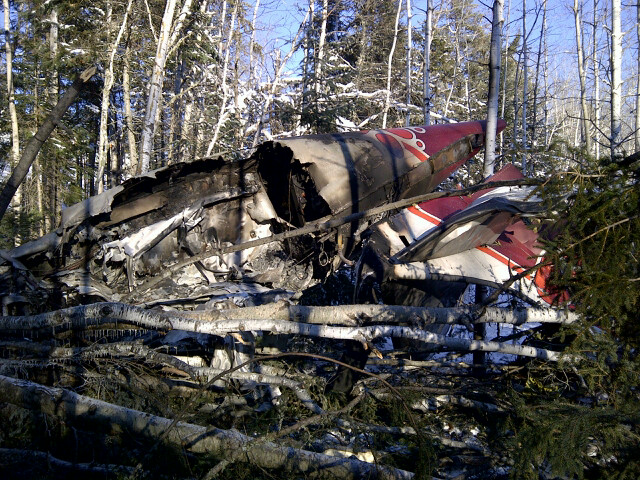Loss of engine power – Collision with terrain
Bearskin Lake Air Service LP (Bearskin Airlines)
Fairchild SA227-AC Metro III, C-FFZN
Red Lake, Ontario
The occurrence
On 10 November 2013, Bearskin Lake Air Service LP flight 311 (Bearskin 311), a Fairchild SA227-AC Metro III (serial number AC 785-B, registration C-FFZN) departed Sioux Lookout, Ontario, with 2 pilots and 5 passengers on an instrument flight rules flight to Red Lake, Ontario. At 1827 Central Standard Time, the crew reported that they were 5 miles from the Red Lake Airport on final approach for Runway 26. Shortly thereafter, the crew declared an emergency. The aircraft struck trees and power lines, and crashed just south of the airfield adjacent to Ontario Highway 125. A post-crash fire ensued which destroyed the aircraft. Two passengers were able to evacuate the aircraft; however, the 2 pilots and remaining 3 passengers sustained fatal injuries. Emergency response units were dispatched to the crash site, and the 2 surviving passengers were transported to a local hospital with non-life-threatening injuries. The 406 MHz emergency locator transmitter did not activate during the accident.
Media materials
News release
Engine power loss led to loss of control on final approach in November 2013 fatal airplane accident in Red Lake, Ontario
Read the news release
Deployment notice
Transportation Safety Board of Canada will deploy a team to the site of a fatal aircraft accident in Red Lake, Ontario
Winnipeg, Manitoba, 10 November 2013 - The Transportation Safety Board of Canada (TSB) will deploy a team tomorrow morning to the site of a fatal aircraft accident in Red Lake, Ontario. The TSB will gather information and assess the occurrence.
Investigation information
Download high-resolution photos from the TSB Flickr page.
Class of investigation
This is a class 3 investigation. These investigations analyze a small number of safety issues, and may result in recommendations. Class 3 investigations are generally completed within 450 days. For more information, see the Policy on Occurrence Classification.
TSB investigation process
There are 3 phases to a TSB investigation
- Field phase: a team of investigators examines the occurrence site and wreckage, interviews witnesses and collects pertinent information.
- Examination and analysis phase: the TSB reviews pertinent records, tests components of the wreckage in the lab, determines the sequence of events and identifies safety deficiencies. When safety deficiencies are suspected or confirmed, the TSB advises the appropriate authority without waiting until publication of the final report.
- Report phase: a confidential draft report is approved by the Board and sent to persons and corporations who are directly concerned by the report. They then have the opportunity to dispute or correct information they believe to be incorrect. The Board considers all representations before approving the final report, which is subsequently released to the public.
For more information, see our Investigation process page.
The TSB is an independent agency that investigates air, marine, pipeline, and rail transportation occurrences. Its sole aim is the advancement of transportation safety. It is not the function of the Board to assign fault or determine civil or criminal liability.

